How to reach here:
By Air: The city has an airport that receives flights from places such as Kolkata and Silchar.
By Rail: Tezpur does not have extensive rail connectivity and it is connected only to Rangiya and Rangapara stations. However trains are not frequent and this may not be feasible. The most suitable option is to take a train to the city of Guwahati and opt for a taxi from the place.
Best time to visit: Throughout the year.
Languages spoken: Assamese, Bengali, Hindi.
Famous Restaurants: Kalash, Royal Paradise, Maaihang.
Places you must visit:
Agnigarh preserves the sweet memory of young lovers. Agnigarh or the rampart surrounded by fire, is perhaps the most beautiful tourist location of Tezpur. It is believed that, princess Usha the only daughter of King Bana was kept inside the palace which was surrounded by a rampart of fire. Agnigarh meaning 'residence amidst fire'.Agnigarh is a big fortress constructed on top of a hill on the banks of Brahmaputra.The access to this place is quite interesting to reach the top of the hill one should take a circular staircase and is a good option for trekking.







The ruins of the Bamuni Hill is famous for its aesthetic beauty. The sculptural ruins, dating back to the 9th and 10th century A.D. now lie in the Cole Park and Missionary compound.The most popular amongst these are the ruins of Da Parbatia that belong to the 4th century AD. There are also certain stone carvings present on the walls of these hills that are known for their creative refinement. A cross-shaped bracket lintel decorated with Kirtimukha panels is also present here that consists of 10 incarnations of Lord Vishnu. Nearby attractions of these hills include temples like Bhairabi and Mahabhairab along with tanks like Bar Pukhuri and Padum Pukhuri.



Da-Parbatia is one of the most famous Gupta era ruins near Tezpur with an exquisitely carved door leading to the inner temple. On either side of the door are carvings of the Goddesses Ganga and Yamuna, with garlands in their hands. The entire door frame is covered with elaborate carvings of flowers and foliage.This temple displays some finest and oldest specimens of sculptural and iconoclastic art of Assam. This art is present here mainly in the form of wall carvings and carries a characteristic of the art style that existed during the early Gupta period. The doorjambs of this temple are adorned by the figures of Goddesses Ganga and Yamuna and have been ornamented with delicate foliage. This site is also protected under the auspices of Archaeological Survey of India.

Harzara Pukhuri is a very huge lake covering an area of about 70 acres and archeology dates its excavation to the early part of the 19th century.It got its name from Harzara Varman of Tezpur. This lake was derived from the excavation held in the 19th century. On the other hand, Padum Pukhuri is a famous island park of Tezpur accessible through a wooden footbridge. The name of this Pukhuri suggests a lotus pond.

Bhairabi Temple is situated on Tezpur border. The presiding deity of this oldest temple of Assam is Goddess Durga. According to legends, Usha, who was the daughter of Asura King Banasura, came regularly to this temple for worshiping Goddess Durga. The stones of the temple is adorned by intricate carvings and images that date back to 9th century.The people visiting this temple offer ghee lamps,fruits and sweets to the goddess.The temple still carries out sacrificial offerings of goats and bulls regularly.

Ketakeshwar Dewal is dedicated to Lord Shiva and is said to have the second biggest Shivalingam in the world.This shrine is a very holy place to the Hindus and is regularly visited by the tourists.There are actually two parts to the temple, one where which is said to be the original place of the Shivalingam and another where the Shivalingam is located presently.The presence of this Lingam in Ketakeshwar Dewal is associated with the legend where it got uprooted during a severe earthquake that took place in Tezpur and got fixed at its current position, itself. Earlier, the temple used to be in the middle of bamboo groves but later on a complete shelter was built over it, making it an established pilgrimage site.


The Bura-Chapori Wildlife Sanctuary is situated on the southern banks of Brahmaputra River in the Sonitpur District, at 30 km from Tezpur. It covers a total area of 44.06 sq. km and its surroundings comprise wet alluvial grassland, riparian and semi-evergreen forests with a river system. This sanctuary is also a part of the Laokhowa-Burachapori eco-system.he fauna in this sanctuary mainly include migratory birds and it is also known to be the natural habitat for Bengal florican bird species. Other animal species in the place includes civet cat, Asiatic buffalo, one horned rhinos, wild boar and other animals. It also has many varieties of fishes, insects and reptiles.Along with fauna, the flora of this sanctuary is also quite diverse. The natural vegetation in the sanctuary consists of several plant species. Most of the plant species found here are of great commercial and medical value. Many flowering trees are also spread within the premises of this sanctuary.

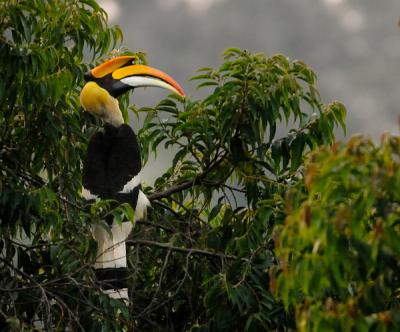
The Cole Park of Tezpur has been recently renamed as Chitralekha Udyan. This park is mainly famous as a site for hosting large scale painting and drawing competitions along with several exhibitions by nearby schools and institutions. It also houses a horse-shoe shaped lake and several natural walkways. It also has a restaurant and an open stage in its premises. It is also the site of two popular stone ornamented pillars of the Bamuni Hills.The popular inscriptions of the Bhomoraguri, which contained the ancient plans of the bridge, built across the Brahmaputra River, are also displayed at this park for public viewing. This includes information about the concrete road bridge of Kalia Bhomora Setu that has been built over the River of Brahmaputra.



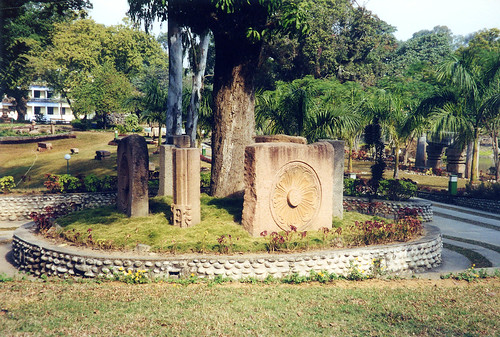

The Kalia Bhomora Setu is a pre-stressed concrete road bridge built over the River of Brahmaputra. It has been named after the Ahom General Kalia Bhomora Phukan and its construction took over 6 years from 1981 to 1987. The construction company of this bridge namely the Hindustan Construction Company was also awarded by the American Concrete Institute with a merit certificate of the most outstanding concrete structure in year 1988. The bridge has a length of 3015 m and it helps to connect Sonitpur District on the north bank with the Nagaon District on the southern bank of River Brahmaputra.
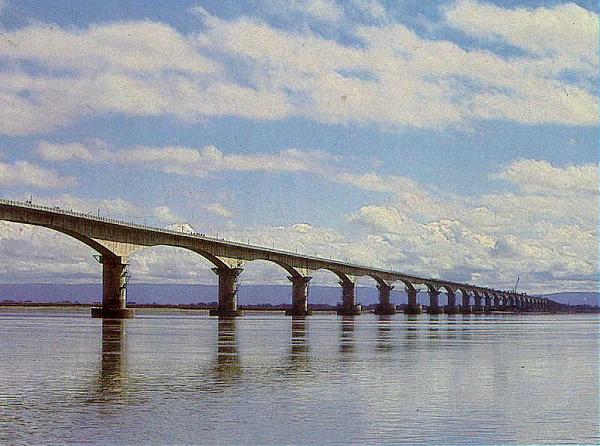
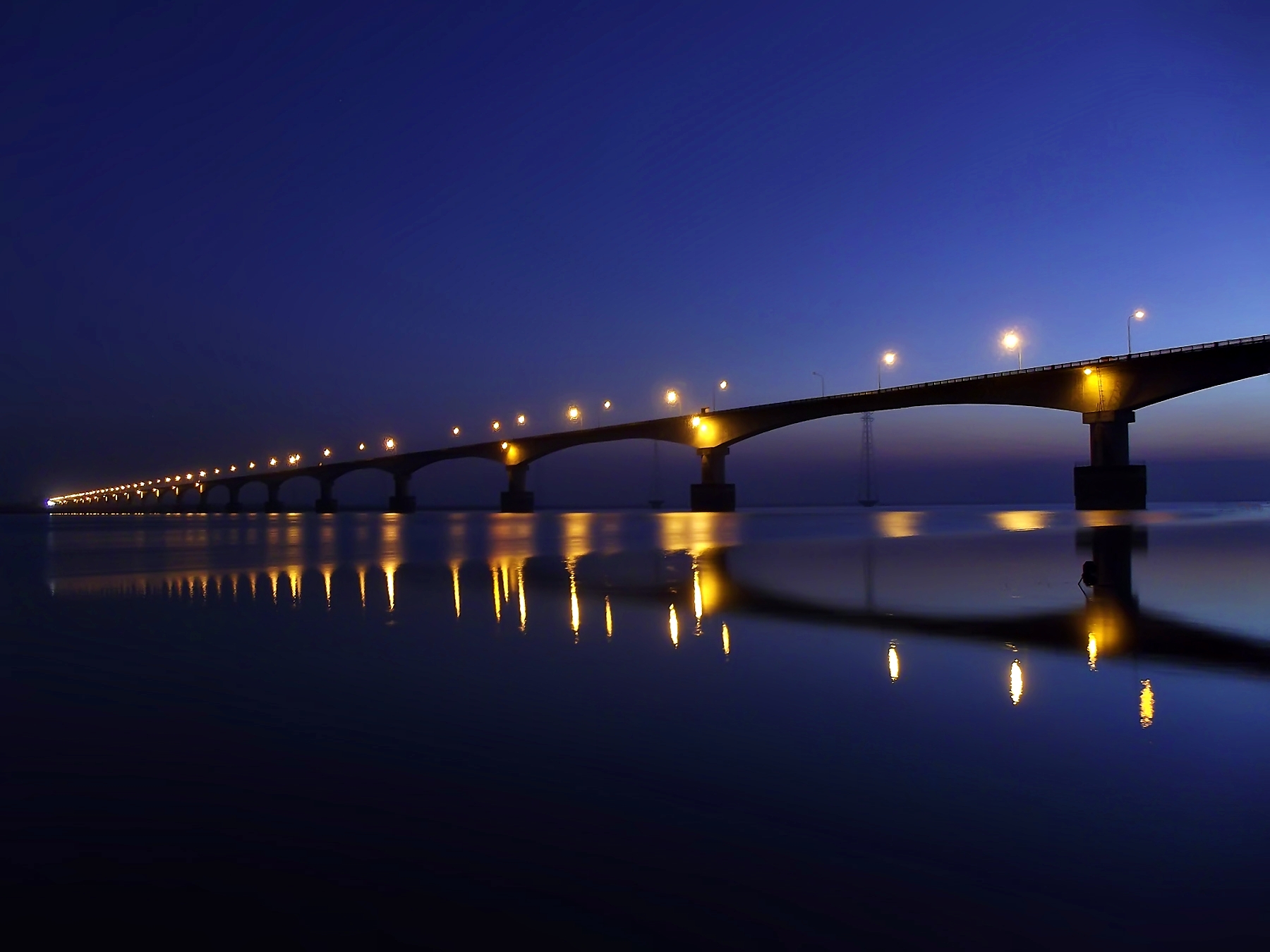
The District Museum of Tezpur is an archaeological museum. This museum was established in 1986 and its main collection consists of traditional Assamese textiles. Its exhibit includes items like inscriptions, silver and copper coins, textiles, old bricks, wooden objects, manuscripts and several stone sculptures.





The Nag-Sankar Temple of Tezpur is said to have been built by King Narasankar of Nagakha in 4th century AD. Later on it was repaired by Ahom king Su-sen-pha in 1480. The premises of this temple contain a large pond comprising a large variety of soft-shell turtles and several fishes. Some of these turtles are even believed to be hundreds of years old. Its campus also has animals like peacocks, deer and pythons.
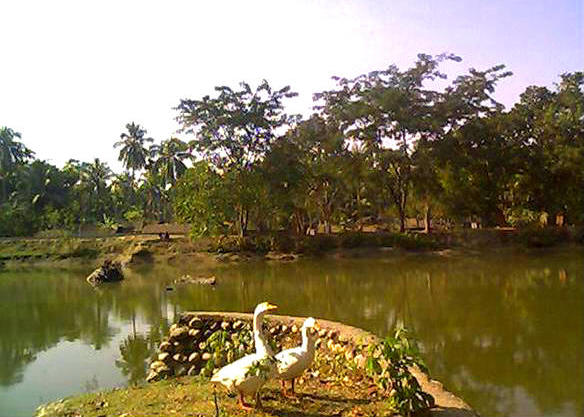
The Mahabhairab Temple is situated on a small hill top in the northern part of Tezpur. The current structure of this temple was built by Nag Baba while later it was developed by Mahadeo Bharati and his devotees. The original temple was destroyed in 1897 earthquake and the present temple was constructed in the early period of 20th century. According to a legend, the original Mahabhairab Temple was built by Asura King, Banasura out of a stone. The main deity of this temple is Lord Shiva and it houses one of the world’s largest Shiva Lingams.At the entrance of this temple, stand the idols of Lord Ganesha and Lord Hanuman in the form of Dwarpals. This gateway also has elaborated embellishments that have been intricately carved out. The instances of the original temple are seen on the huge pillars of this temple



Auguri Hills is situated on the banks of Brahmaputra River. The specialty of this hill is a statue of Kanaklata, placed on its top. Kanaklata was a martyr in the Quit India Movement. Its hill top also provides a complete view of the Brahmaputra River and Tezpur town. Its rugged terrains are also popular amongst rock climbers.

The Rudrapada Temple lies on the banks of Brahmaputra River and is dedicated to Lord Shiva. Shiva in this temple is worshiped in the ‘rudra’ form and the devotees believe that a stone in this temple carries the print of left foot of Lord Shiva. According to a legend, this temple is built in the place where Lord Shiva showed his real life to king Bana. The temple was built by Siva Singa in 1730 AD and Mahashivaratri is the main festival celebrated here.
The Trimurty Udyan is a popular recreation center of Tezpur. The center has been named after three significant personalities of Assamese culture namely Kalaguru Bishnu Prasad Rabha, Rupkowar Jyoti Prasad Agarwalla and Natasurjya Phani Sarmah.

No comments:
Post a Comment